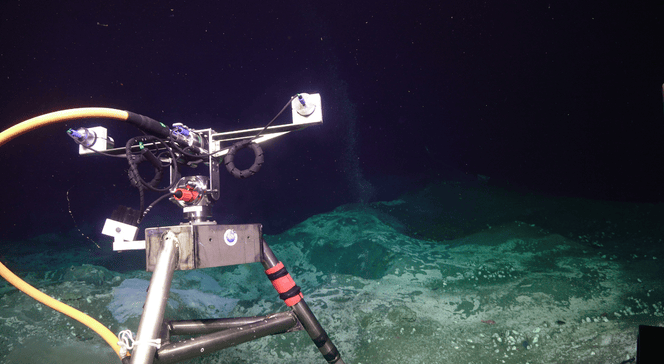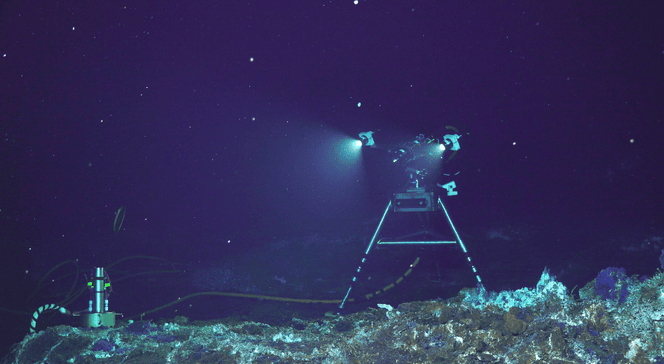SubC Camera Positioned to Capture Next Major Undersea Volcanic Eruption
Axial Seamount, an active submarine volcano located about 480 km off the coast of Oregon, is showing signs of increased seismic activity. Scientists monitoring the site through the US National Science Foundation’s (NSF) Ocean Observatories Initiative (OOI) are closely watching for what could be the next major undersea volcanic eruption.
When it happens, a SubC Imaging camera will be there to capture it.
Photo Credit: UW/NSF-OOI/WHOI; V25.
Monitoring the Axial Seamount in Real Time
The Ocean Observatories Initiative, funded by the U.S. National Science Foundation, operates one of the world’s most advanced ocean monitoring networks. A key part of that network is the Regional Cabled Array, operated by the University of Washington, which hosts two underwater cables that run from Pacific City, Oregon, to sites across the Cascadia Margin and all the way to Axial Seamount. This undersea volcano has erupted three times since 1998, most recently in 2015, and current earthquake activity suggests another eruption could occur in the near future.
With a SubC camera installed at the summit of the volcano, adapted for use on the OOI-RCA cabled network by engineers at the University of Washington’s Applied Physics Laboratory (APL), researchers can continuously observe and document changes in the seafloor environment. From shifts in hydrothermal vent activity to the eruption itself, the video data provides scientists with critical insights into how undersea volcanoes behave and impact surrounding ecosystems.
Photo Credit: UW/NSF-OOI/WHOI; V25.
Watch Live from the Seafloor
The SubC camera on Axial Seamount is streaming continuously from 1500 meters below the surface. See exactly what scientists are monitoring in real time through the high-definition live feed.
SubC Tech Powering Long-Term Observation
The SubC camera was selected for its ability to deliver reliable, high-quality video in some of the harshest subsea environments. Connected through OOI’s cabled observatory, the cameras provide:
Real-time video monitoring of volcanic activity at 1500 meters depth.
High-resolution imagery and time-lapse footage that captures changes in seafloor structure and vent systems.
Durability for continuous long-term deployment.
This combination of features allows scientists to not only watch for eruption events, but also study other geological and biological changes that occur on the seamount.
Why Scientists Are Watching Closely
Monitoring Axial Seamount is more than just a geological exercise. Subsea eruptions provide insights into plate tectonics, earthquake processes, and the formation of new ocean crust. They also influence deep-sea ecosystems, creating unique chemosynthetically powered environments around hydrothermal vents.
By helping capture these rare and scientifically valuable events, SubC Imaging technology is enabling researchers to advance understanding of our planet’s most dynamic underwater systems.
Photo Credit: UW/NSF-OOI/WHOI; V25.
Follow the Forecast
For those interested in tracking the latest data from Axial Seamount:
As seismic activity continues to build, the world is watching to see when the next eruption will occur. A SubC Imaging camera will be ready to record it.



